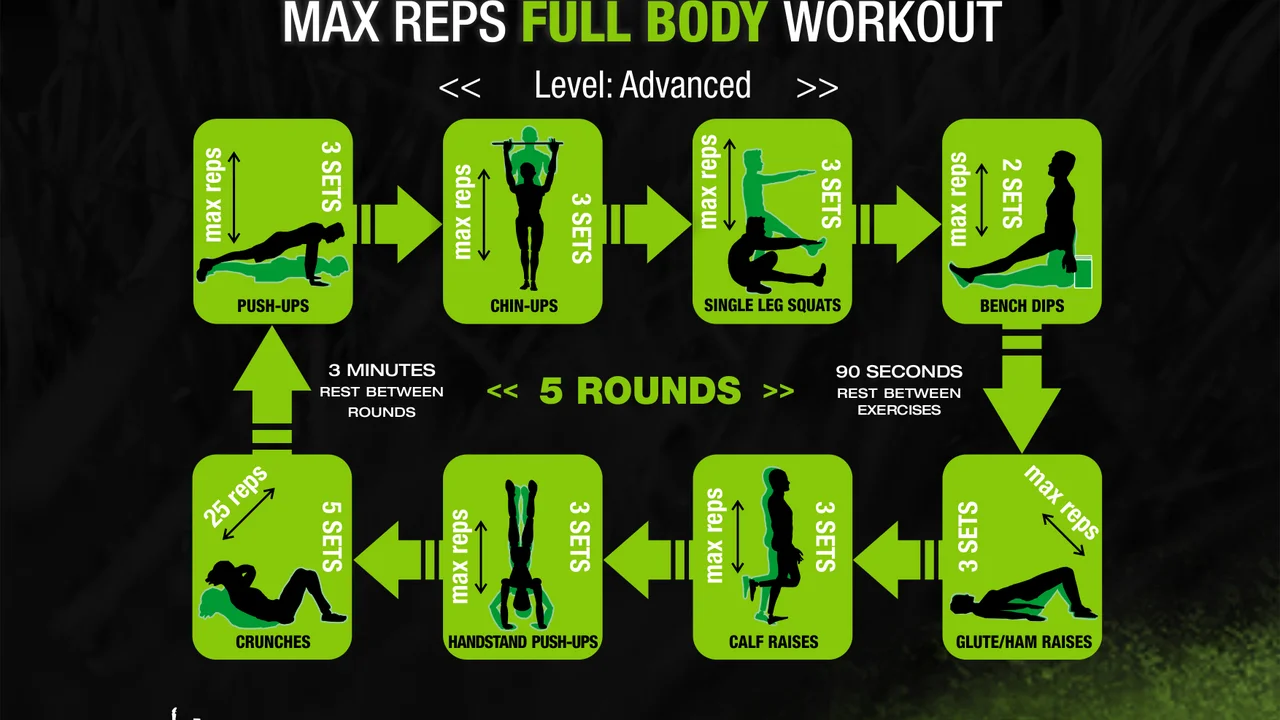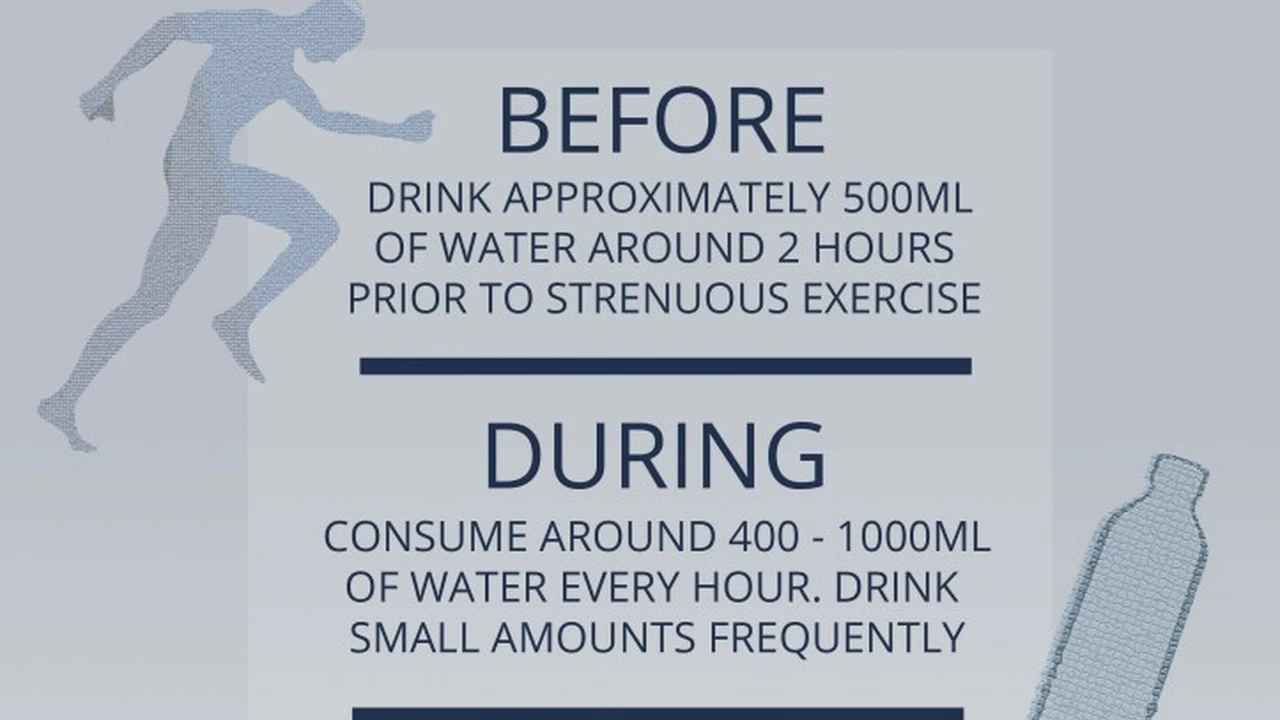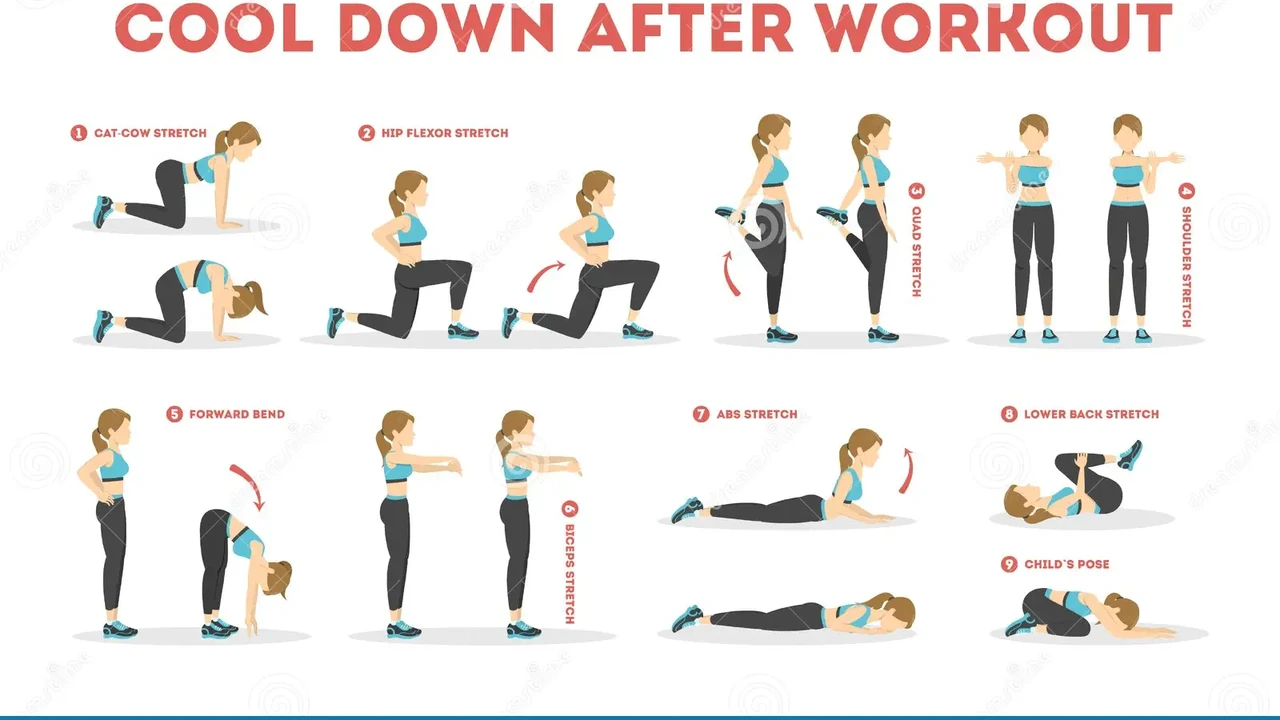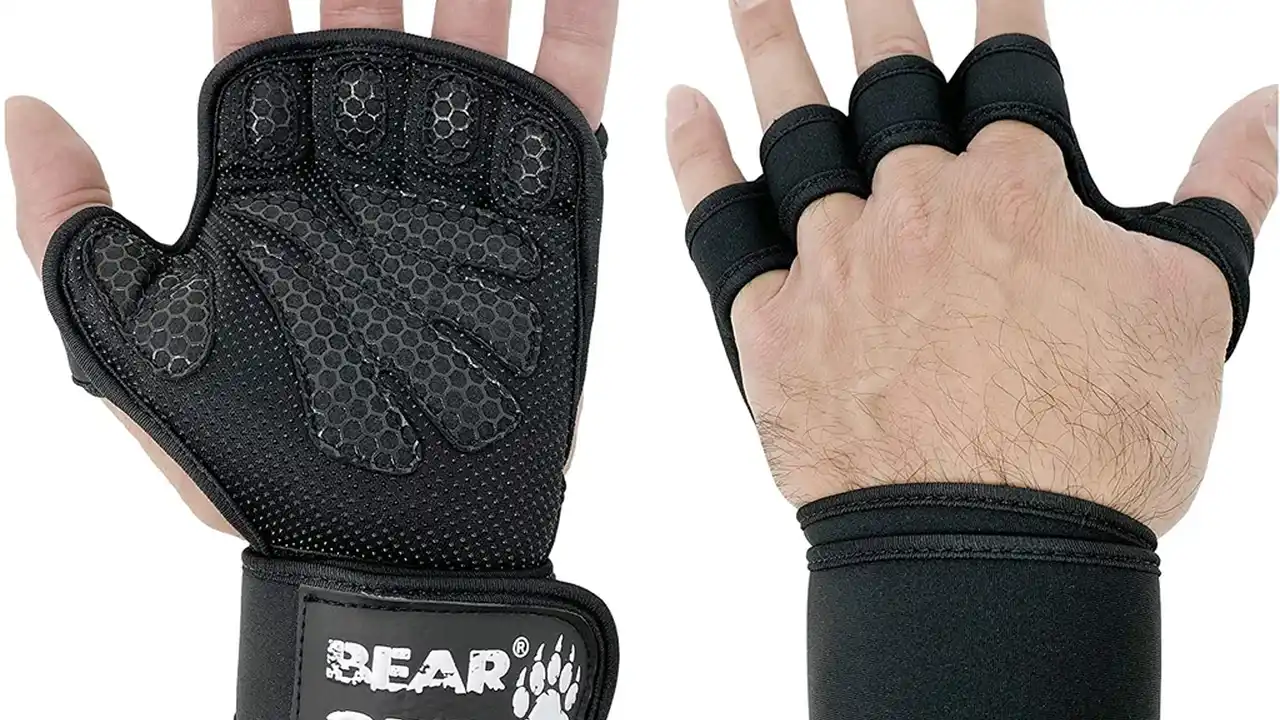Bodyweight Circuit Training for Street Workout
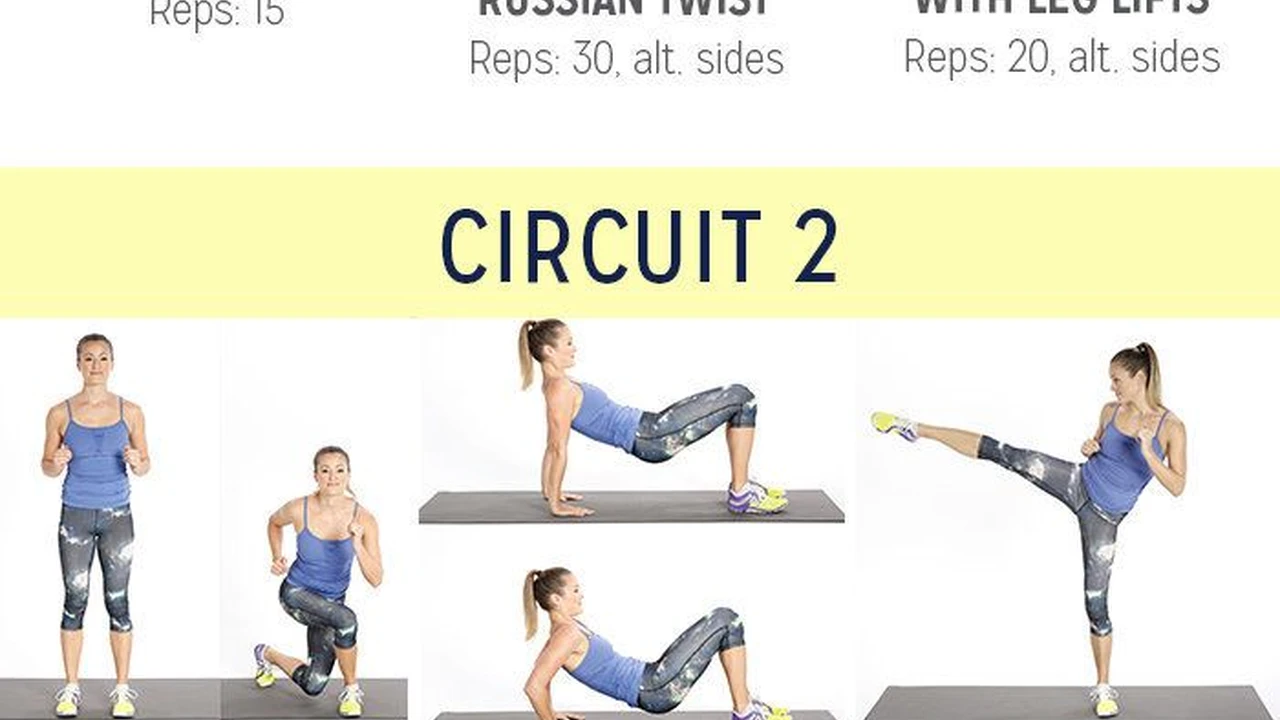
Understanding the Fundamentals of Street Workout Program Design
Street workout, a dynamic blend of calisthenics and urban exploration, demands a well-structured program for optimal results. Before diving into specific exercises and routines, it's crucial to grasp the fundamental principles that underpin effective street workout program design. This involves understanding your fitness level, setting realistic goals, and tailoring your training to address your specific needs and aspirations.
Assessing Your Current Fitness Level for Street Workout Success
The first step in designing any effective workout program is to accurately assess your current fitness level. This involves evaluating your strength, endurance, flexibility, and mobility. Can you perform a certain number of pull-ups, push-ups, and squats with proper form? How long can you hold a plank? What is your range of motion in key joints like your shoulders, hips, and ankles? Answering these questions will provide a baseline for tracking your progress and identifying areas that require improvement.
Consider using a simple self-assessment tool or consulting with a qualified fitness professional for a more comprehensive evaluation. Remember to be honest with yourself – overestimating your abilities can lead to injuries, while underestimating them can hinder your progress.
Setting Realistic Goals for Your Street Workout Journey
Once you have a clear understanding of your current fitness level, it's time to set realistic goals. What do you hope to achieve through street workout? Do you want to build strength, improve your endurance, master advanced skills like muscle-ups and planches, or simply enhance your overall fitness and well-being? Your goals should be specific, measurable, achievable, relevant, and time-bound (SMART).
For example, instead of setting a vague goal like "get stronger," aim for something more specific like "increase my pull-up count from 5 to 10 in 8 weeks." This provides a clear target and allows you to track your progress effectively. Remember to break down larger goals into smaller, more manageable steps. This will make the process less daunting and help you stay motivated along the way.
Tailoring Your Training to Your Specific Needs and Aspirations
Street workout is a highly adaptable form of exercise, meaning you can tailor your training to suit your individual needs and aspirations. Whether you're a beginner looking to build a solid foundation or an experienced athlete seeking to master advanced skills, your program should be designed to address your specific goals and challenges.
Consider factors such as your body type, training history, and any existing injuries or limitations. If you have a history of shoulder problems, for example, you may need to modify certain exercises or focus on strengthening the muscles that support your shoulders. Similarly, if you're primarily interested in building strength, your program should prioritize exercises that challenge your muscles with high resistance. If you're more interested in mastering skills, you'll need to incorporate specific drills and progressions that target those skills.
Designing a Progressive Street Workout Routine for Optimal Gains
Progression is the cornerstone of any effective workout program. It involves gradually increasing the demands placed on your body over time, forcing it to adapt and become stronger. In street workout, progression can be achieved through various methods, including increasing the difficulty of exercises, adding more repetitions or sets, reducing rest periods, and incorporating more challenging variations.
Increasing the Difficulty of Exercises for Continuous Improvement
One of the most straightforward ways to progress in street workout is to increase the difficulty of the exercises you perform. This can involve transitioning from easier variations to more challenging ones. For example, if you can comfortably perform 10 regular push-ups, you can progress to incline push-ups, decline push-ups, or even diamond push-ups. Similarly, if you can perform regular pull-ups with ease, you can progress to archer pull-ups, muscle-ups, or one-arm pull-ups.
The key is to choose exercises that challenge you without compromising your form. Avoid progressing too quickly, as this can increase your risk of injury. Focus on mastering the fundamentals before moving on to more advanced variations.
Adding More Repetitions or Sets to Your Street Workout
Another effective way to progress is to gradually increase the number of repetitions or sets you perform. This increases the overall volume of your training, which can lead to greater muscle growth and strength gains. For example, if you're currently performing 3 sets of 8 pull-ups, you can gradually increase to 3 sets of 10, then 3 sets of 12, and so on.
You can also vary the number of repetitions and sets you perform within a single workout. For example, you can perform a pyramid set, where you gradually increase the number of repetitions in each set until you reach a peak, then gradually decrease the number of repetitions in each set. This can help to challenge your muscles in different ways and prevent plateaus.
Reducing Rest Periods for Enhanced Endurance and Fat Burning
Reducing rest periods between sets is another effective way to progress your street workout. This increases the intensity of your workout and can lead to improved cardiovascular fitness and fat burning. For example, if you're currently resting for 60 seconds between sets, you can gradually reduce your rest periods to 45 seconds, then 30 seconds, and so on.
Be careful not to reduce your rest periods too quickly, as this can compromise your form and increase your risk of injury. Focus on maintaining good form throughout your workout, even when you're feeling fatigued.
Incorporating More Challenging Variations for Advanced Street Workout Skills
As you become more proficient in street workout, you can incorporate more challenging variations of common exercises. This can involve adding weight, using resistance bands, or performing more complex movements that require greater strength, balance, and coordination. For example, you can add weight to your pull-ups using a weight belt, use resistance bands to assist with your muscle-ups, or perform handstand push-ups against a wall.
These advanced variations can help you to break through plateaus and continue to make progress towards your goals. However, it's important to approach them with caution and to ensure that you have a solid foundation of strength and skill before attempting them.
Nutrition Strategies to Fuel Your Street Workout Performance
Nutrition plays a vital role in supporting your street workout performance and recovery. What you eat before, during, and after your workouts can significantly impact your energy levels, strength, and ability to recover from training. A well-balanced diet that provides adequate protein, carbohydrates, and healthy fats is essential for optimal results.
Pre-Workout Nutrition for Sustained Energy and Focus
What you eat before your workout can significantly impact your energy levels and focus during training. Aim to consume a meal or snack that provides a combination of carbohydrates and protein about 1-2 hours before your workout. Carbohydrates provide your body with readily available energy, while protein helps to preserve muscle mass and promote recovery.
Good pre-workout options include:
* Oatmeal with fruit and nuts * Greek yogurt with berries and granola * A protein smoothie with fruit and vegetables * A whole-wheat sandwich with lean proteinAvoid consuming large meals or foods that are high in fat or fiber right before your workout, as these can cause digestive discomfort and slow down your performance.
Intra-Workout Nutrition for Enhanced Endurance and Hydration
For longer or more intense street workout sessions, consider consuming a small amount of carbohydrates during your workout to maintain your energy levels and prevent fatigue. This can be in the form of a sports drink, energy gel, or a small piece of fruit.
Hydration is also crucial during your workout. Drink plenty of water to replace the fluids you lose through sweat. Dehydration can lead to fatigue, muscle cramps, and decreased performance.
Post-Workout Nutrition for Muscle Recovery and Growth
After your workout, your body needs to replenish its energy stores and repair any muscle damage that occurred during training. Aim to consume a meal or snack that provides a combination of protein and carbohydrates within 30-60 minutes of finishing your workout. Protein helps to rebuild muscle tissue, while carbohydrates replenish your glycogen stores, which are your body's primary source of energy.
Good post-workout options include:
* A protein shake with fruit and milk * Chicken breast with brown rice and vegetables * A tuna sandwich on whole-wheat bread * Greek yogurt with fruit and granolaConsider supplementing with creatine monohydrate, a well-researched supplement that can enhance muscle strength and power. Creatine helps to increase the availability of ATP, the primary energy currency of your cells, which can lead to improved performance during high-intensity exercise.
Gear Recommendations for Street Workout Enthusiasts
While street workout can be performed with minimal equipment, certain gear can enhance your training experience and help you to achieve your goals more effectively. This includes gloves, wrist wraps, resistance bands, and a portable pull-up bar.
Gloves for Enhanced Grip and Protection
Gloves can provide enhanced grip and protection for your hands, especially when performing exercises on rough surfaces like metal bars. Look for gloves that are made from durable materials and that provide good padding in the palm area. Gloves can also help to prevent calluses and blisters from forming on your hands.
Product Recommendation: Bear KompleX 3-Hole Hand Grips - These grips are made from high-quality leather and provide excellent grip and protection. They are also durable and long-lasting.
Use Case: These grips are ideal for performing pull-ups, muscle-ups, and other exercises that require a strong grip.
Product Comparison: Compared to cheaper alternatives, Bear KompleX grips offer superior durability and grip. They are also more comfortable to wear for extended periods of time.
Detailed Information: Available on Amazon for around $40.
Wrist Wraps for Joint Support and Injury Prevention
Wrist wraps can provide support and stability for your wrists, especially when performing exercises that put a lot of stress on the joints, such as handstands and push-ups. Wrist wraps can also help to prevent injuries by limiting the range of motion in your wrists.
Product Recommendation: Rip Toned Wrist Wraps - These wraps are made from durable materials and provide excellent support. They are also adjustable, allowing you to customize the level of support you need.
Use Case: These wraps are ideal for performing handstands, push-ups, and other exercises that put stress on your wrists.
Product Comparison: Compared to elastic wraps, Rip Toned wraps offer more support and stability. They are also more durable and long-lasting.
Detailed Information: Available on Amazon for around $20.
Resistance Bands for Assisted Training and Progressive Overload
Resistance bands can be used for assisted training, making it easier to perform challenging exercises like pull-ups and muscle-ups. They can also be used to add resistance to easier exercises, increasing the intensity of your workout. Resistance bands are a versatile tool that can be used to progress your street workout program.
Product Recommendation: Serious Steel Fitness Resistance Bands - These bands are made from high-quality latex and are available in a variety of resistance levels. They are also durable and long-lasting.
Use Case: These bands can be used for assisted pull-ups, muscle-ups, and other exercises. They can also be used to add resistance to squats, push-ups, and other bodyweight exercises.
Product Comparison: Compared to cheaper alternatives, Serious Steel bands offer superior durability and resistance. They are also less likely to snap or break.
Detailed Information: Available on Amazon for around $50 (for a set of multiple bands).
Portable Pull-Up Bar for Convenient Training Anywhere
A portable pull-up bar allows you to perform pull-ups and other exercises at home, in the park, or anywhere you have a doorframe. This is a convenient way to incorporate pull-ups into your routine, even when you don't have access to a traditional pull-up bar.
Product Recommendation: Iron Gym Total Upper Body Workout Bar - This bar is easy to install and remove and can be used for a variety of exercises, including pull-ups, chin-ups, and dips.
Use Case: This bar is ideal for performing pull-ups and other exercises at home or on the go.
Product Comparison: Compared to more expensive pull-up stations, the Iron Gym bar is a more affordable and convenient option.
Detailed Information: Available on Amazon for around $30.
Avoiding Common Mistakes in Street Workout Program Design
Even with the best intentions, it's easy to make mistakes when designing a street workout program. These mistakes can hinder your progress, increase your risk of injury, and lead to frustration. By being aware of these common pitfalls, you can avoid them and create a more effective and enjoyable training experience.
Ignoring Proper Form and Technique
One of the most common mistakes in street workout is ignoring proper form and technique. This can lead to injuries and prevent you from maximizing your results. Focus on mastering the fundamentals before moving on to more advanced exercises. Pay attention to your body alignment, muscle engagement, and breathing patterns. If you're unsure about proper form, consult with a qualified fitness professional.
Overtraining and Lack of Recovery
Overtraining is another common mistake that can lead to fatigue, injuries, and decreased performance. It's important to allow your body adequate time to recover between workouts. This includes getting enough sleep, eating a healthy diet, and incorporating rest days into your training schedule. Listen to your body and take a break when you need it.
Neglecting Mobility and Flexibility
Mobility and flexibility are essential for optimal street workout performance and injury prevention. Neglecting these areas can lead to stiffness, pain, and limited range of motion. Incorporate regular stretching and mobility exercises into your routine to improve your flexibility and range of motion in key joints like your shoulders, hips, and ankles.
Lack of Variety and Progressive Overload
Performing the same exercises over and over again can lead to plateaus and boredom. It's important to incorporate variety into your training program to challenge your muscles in different ways and prevent plateaus. Also, remember to progressively overload your muscles by gradually increasing the difficulty of your exercises, adding more repetitions or sets, or reducing rest periods.
Ignoring Individual Needs and Limitations
Every individual is different, and what works for one person may not work for another. It's important to tailor your street workout program to your specific needs and limitations. Consider factors such as your body type, training history, and any existing injuries or limitations. Don't be afraid to modify exercises or seek professional guidance to ensure that your program is safe and effective for you.
Sample Street Workout Programs for Different Fitness Levels
To help you get started, here are some sample street workout programs for different fitness levels. These programs are designed to be a starting point and can be adjusted to suit your individual needs and goals.
Beginner Street Workout Program
This program is designed for individuals who are new to street workout and have limited experience with calisthenics. It focuses on building a solid foundation of strength and endurance.
* **Workout 1:** * Push-ups: 3 sets of 8-12 repetitions * Squats: 3 sets of 12-15 repetitions * Plank: 3 sets of 30-60 seconds * Incline Rows: 3 sets of 8-12 repetitions (using a low bar or bench) * Crunches: 3 sets of 15-20 repetitions * **Workout 2:** * Knee Push-ups: 3 sets of 8-12 repetitions * Lunges: 3 sets of 10-12 repetitions per leg * Side Plank: 3 sets of 30-60 seconds per side * Pull-up negatives: 3 sets of as many repetitions as possible (controlled descent) * Leg Raises: 3 sets of 15-20 repetitionsPerform each workout 2-3 times per week, with at least one day of rest between workouts. Focus on proper form and technique. As you get stronger, gradually increase the number of repetitions or sets, or progress to more challenging variations of the exercises.
Intermediate Street Workout Program
This program is designed for individuals who have a good foundation of strength and endurance and are looking to progress to more challenging exercises.
* **Workout 1:** * Pull-ups: 3 sets of 8-12 repetitions * Push-ups: 3 sets of 12-15 repetitions * Squats: 3 sets of 15-20 repetitions * Dips: 3 sets of 8-12 repetitions (using parallel bars or a sturdy bench) * Hanging Leg Raises: 3 sets of 15-20 repetitions * **Workout 2:** * Chin-ups: 3 sets of 8-12 repetitions * Decline Push-ups: 3 sets of 10-12 repetitions * Lunges: 3 sets of 12-15 repetitions per leg * Pike Push-ups: 3 sets of 8-12 repetitions * Russian Twists: 3 sets of 20-25 repetitions per sidePerform each workout 2-3 times per week, with at least one day of rest between workouts. Focus on proper form and technique. As you get stronger, gradually increase the number of repetitions or sets, or progress to more challenging variations of the exercises.
Advanced Street Workout Program
This program is designed for individuals who have a high level of strength and skill and are looking to master advanced street workout movements.
* **Workout 1:** * Muscle-ups: 3 sets of as many repetitions as possible * Handstand Push-ups: 3 sets of as many repetitions as possible (against a wall or freestanding) * Pistol Squats: 3 sets of 8-12 repetitions per leg * Front Lever Progressions: 3 sets of as many repetitions as possible (tuck, advanced tuck, straddle) * Dragon Flags: 3 sets of 8-12 repetitions * **Workout 2:** * One-Arm Pull-ups: 3 sets of as many repetitions as possible (assisted or unassisted) * Diamond Push-ups: 3 sets of 10-12 repetitions * Jump Squats: 3 sets of 15-20 repetitions * Back Lever Progressions: 3 sets of as many repetitions as possible (tuck, advanced tuck, straddle) * L-Sit Progressions: 3 sets of as many repetitions as possible (tuck, straddle, straight leg)Perform each workout 2-3 times per week, with at least one day of rest between workouts. Focus on proper form and technique. As you get stronger, gradually increase the number of repetitions or sets, or progress to more challenging variations of the exercises. Consider incorporating weighted exercises to further challenge your muscles.
:max_bytes(150000):strip_icc()/277019-baked-pork-chops-with-cream-of-mushroom-soup-DDMFS-beauty-4x3-BG-7505-5762b731cf30447d9cbbbbbf387beafa.jpg)



